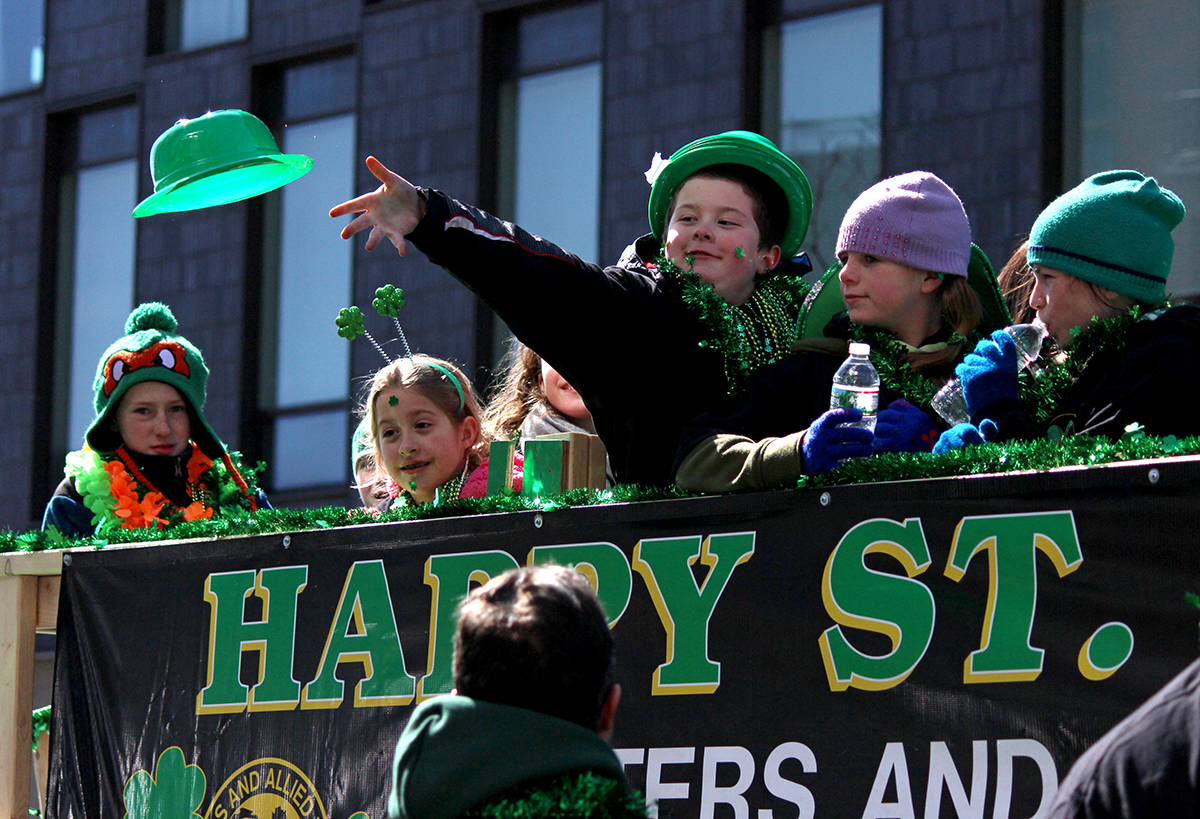Why Was Boston’s St. Patrick’s Day Parade in Court Again?

PHOTO BY OLGA KHVAN
The organizers of Boston’s St. Patrick’s Day parade have spent their share of time inside a courtroom defending their parade and its traditions. The parade just may be the most litigious parade in the entire United States.
In the early 1990s, the parade’s organizers, the Allied War Veterans Council of South Boston, took their fight against allowing gays and lesbians to march in the parade all the way to the Supreme Court where they won the landmark Hurley v. Irish-American Gay, Lesbian and Bisexual Group of Boston, Inc. on a unanimous decision. The court’s ruling set the stage for a decades-long struggle between LGBT activists, parade organizers, and local politicians to allow the inclusion of gays and lesbians. In 2015, the organizers voluntarily changed their tune and allowed the LGBT community to march in the parade for the first time.
On Tuesday, the parade was back in federal court, but for an entirely different reason: The city wants to shorten the parade route.
The city lost their fight to shorten the route when US District Judge Richard G. Stearns ruled the parade organizers had a constitutional right to march along their original route. Stearns said the parade was protected by the First Amendment and had a long history of marching the same route through South Boston.
So how did we get here?
Why does City Hall want to shorten the length of the St. Patrick’s Day parade?
Last year’s historic winter prompted city officials to shorten the length of the parade route through the snow-clogged streets of South Boston. City Hall and public safety officials decided to use the same route again this year because they believe it “is in the best interest of public safety.” The new route minimizes the parade’s effect on South Boston and allows the city to reopen the streets earlier, according to city officials. Another major factor for the shorter parade route: cost. A shorter parade route means not as many police officers have to patrol the streets of South Boston. In 2015, police reportedly deployed 150 fewer police officers to patrol the route.
During the court hearing, police officials, including Superintendent Bernard O’Rourke, testified that the parade creates a major headache for public safety because they have to police a large crowd that is often intoxicated. The surge in visitors to the area is “quite simply causing us a lot of problems,” said O’Rourke.
In 2015, parade related calls for police and emergency medical services dropped by 30 and 44 percent, respectively, from their 2014 numbers.
Wasn’t that because of all the snow last year?
Yes, this is something parade organizers are really concerned about. In interviews, they have said that the unusually warm winter means larger crowds will turn out for the parade this year, even though the route is shorter than in previous years. “Going from Broadway (Station) to Farragut Road is going to create a total boondoggle,” said Allied War Veterans Council of South Boston Commander Bill Desmond.
The larger crowds, they argue, will be squished into a smaller area and create unnecessary problems. Plus, they’ve always hosted the parade along the same route, so why change? They believe last year’s shorter route should be a one-time change because of the weather.
Is the difference only between ending at Farragut Road rather than Andrew Square, or is there more to it?
St. Patrick’s Day in Boston doubles as Evacuation Day, a holiday that commemorates the British departure from Boston during the Revolutionary War. The parade, while largely a celebration of Irish heritage, also celebrates the military. The traditional route passed the Revolutionary War memorial on Dorchester Heights and an American Legion Post, but under the shortened route those military spots were skipped.
Where will the parade route go now?
Along its usual route from Broadway Station to East 4th Street to Andrew Square.
Will the city continue its limit on alcohol sales along the parade route?
The city restricts the sale of liquor from package stores along the parade route from noon to 4 p.m. the day of the parade. Bars and restaurants along the route must stop allowing new patrons in after 6:30 p.m. and must stop serving after 7 p.m. In court, Stearns said the city is justified in its restirctions in alcohol but not on shortening the parade route.
When does the parade start?
1 p.m. at Broadway Station.
Is the fight over the parade route over?
Who knows? This parade is drawn to courtroom battles like a moth to a flame.


